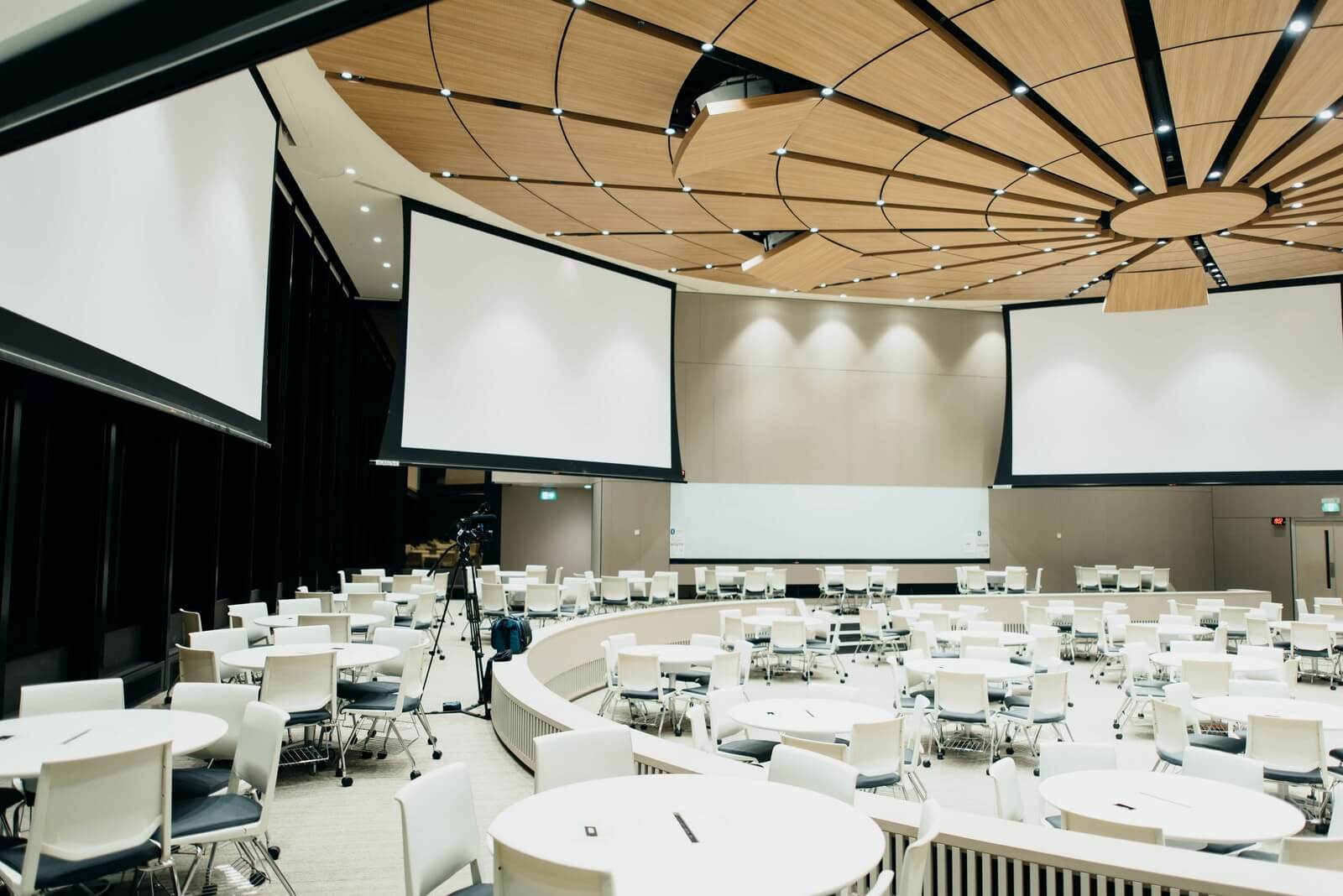Design Strategy, Trends
At the intersection of technology and design lies a huge potential to create meaningful solutions. In last week’s article, we briefly explored some of the new technology that will soon find its way into our everyday lives. Today we examine a few industries where tech and design are already beginning to sit comfortably together and we explore what the future could bring.
SPACE DESIGN
For disciplines like architecture, interior design, process and factory layouts, and other space design fields, new technologies are opening up possibilities like never imagined before. mixed reality tools like Microsoft HoloLens allow all parties involved in decision making to view, edit and participate in the development of designs before execution, resulting in huge cost and time saving thanks to real time interaction, as well as improved customer and end user satisfaction!

With a VR headset, potential users of a space can take a virtual walkthrough in an unfinished project to see what the end result will look like.
Realtor apps like Street Peek already use augmented reality to have information like listing price and number of bedrooms pop up when potential home buyers/renters point their phone at a house.

PRODUCT DESIGN
Virtual and augmented reality improves the efficiency of collaborative efforts – a key element in developing sound and purposeful products.
According the the Microsoft website, “Microsoft HoloLens and Autodesk Fusion 360 are helping improve collaboration across the entire product development process, enabling engineers and designers to iterate together in real-time. Faster prototyping, more confident decisions, and more efficient cooperation are the future of product design.”

MANUFACTURING
Google Glass, which didn’t do as well as its creators imagined it would in the mass consumer market, would appear to be finding a new lease of life in its new avatar – Google Glass Enterprise Edition, or Glass EE as it’s referred to by those in the know.
This version, which was adopted as pilot projects for testing in companies like GE, Boeing, DHL and Volkswagen, is beginning to garner large scale adoption, thanks to the improved quality and productivity observed by these early adopters, where Glass has helped workers improve their efficiency. For example, when workers at GE use Glass EE with a wi-fi enabled torque wrench, the device tells them if they are using the right amount of torque.

Further, research from Forrester indicates that by 2025, over 14 million US workers will be wearing smart glasses at their workplace.
Glass is a good example of innovative technology missing the mark, when its market potential is not properly explored and the product isn’t accordingly modified to suit a latent need. While Glass failed to garner mass B2C adoption, it appears to be redeeming itself in its 2.0 version in the B2B market.
RETAIL
Augmented and virtual reality have the ability to add tremendous value to the world of retail, and are poised to be used more frequently in the future.
We’ve already seen some examples of how virtual reality can offer a more immersive experience when it comes to advertising. For example, Lipton’s 360 VR ad campaign of 2016 allowed viewers to “go on a journey” inside a relaxing cup of tea. Similarly, Oreo’s campaign took their audience through a sweet-filled, tempting journey to promote their new cupcake filled cookie, while Johnnie Walker used VR to create a more realistic viewing experience while promoting awareness around the consequences of drinking and driving.
With augmented reality, retailers have the opportunity to put more information in the hands of their consumers, in a more fun and interactive way, simply by pointing their phone at an object. Imagine a future where you could walk through your supermarket and point your phone at a loaf of bread to have its ingredients, expiry date and such information pop up on your screen – the day when this will be commonplace is not that far away.

Besides educating or imparting information to potential consumers, AR could also offer them a more convenient, pleasurable and time saving shopping experience. Companies like Home Depot, Ikea, Lacoste and Sephora already have apps that do just this.
With Ikea Place for example, you can point your phone at any space and see what an Ikea product would look like in it. With the Lacoste LCST app, users just need to scan trigger images in a Lacoste store and can “try on” an entire product range, as well as interact with additional information. Timberland has even experimented with using AR technology for users to try on clothes, without physically trying them on.
TRAVEL & TOURISM
Augmented reality puts information at the tips of travellers’ fingers, as they explore a new place. From historical information on monuments to nearby restaurants, lodging and other facilities, the improved experience for travellers results in more accurate information dissemination, time saving, better informed decision making and ultimately, happier holidays!

eTips is one company already offering AR enabled apps that turn your phone into you own personal your guide. Their apps are categorised into Landmarks, National Parks, Cities and Museums. So for example, if you were visiting the Louvre in Paris and wanted to know more about a particular painting, all you would have to do is point your phone at the painting and have the information pop up on your screen!
This article from CNN explores ten popular AR travel apps.
HEALTHCARE
According to HackerNoon, by 2025 the healthcare revenue from augmented and virtual reality will be around $5 billion. Here are a few ways the medical world has already adopted the technology:
Using the Augmedix platform with Glass, a ‘scribe’ or real time assistant is able to remotely experience what a doctor sees and hears, thus freeing him up from the task of having to fill in information and leaving him more time to focus on his patient.
In one study, the total time spent on data entry went down from 33% of the day to just 10%, while patient interaction rose from 35% to 70%.

Another example is AccuVein. According to the company, 40% of IV injections miss locating the vein on the first attempt. Accuvein uses projection based augmented reality to make vein location in patients far more accurate it and has been found to improve the likelihood of first stick success by 3.5 times.
The AED4EU app used in conjunction with the Layar reality browser could potentially save people’s lives by helping them locate the nearest defibrillator.
EDUCATION
Virtual and augmented reality in education allow one to experience something without actually having to be present at the place. For example, with Google Expeditions students can explore places from the Great Barrier Reef to Mount Everest, without having to ever leave the classroom!

AN EXCITING FUTURE FOR DESIGNERS
We’ve only really covered just the tip of the iceberg in this article. While we’ve highlighted the major tech trends that are going to impact us, we’ve examined just some of the possibilities in just a few industries. That’s because the potential is enormous. We would have to write book-sized article to explore it all completely in depth.
The idea is to get us all, as designers, thinking about where we could find a place in this landscape that will soon be upon us.
As a designer where do you think you will fit in in the future?
Do share your thoughts in the comments below and don’t forget to check out Part 1 of this article.



















